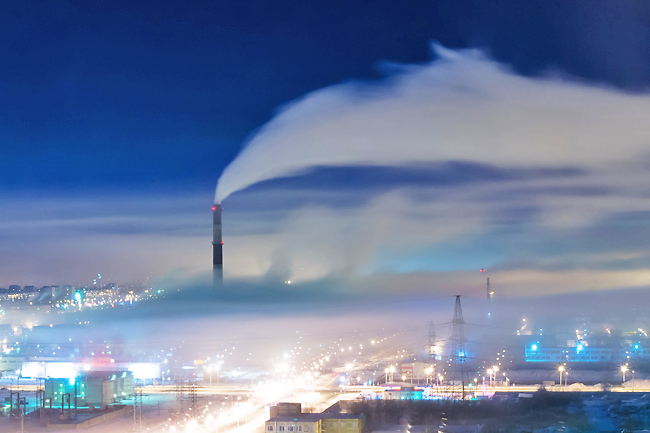Aqilah Rahman
Air pollution is considered a severe environmental health threat. Fine particle pollution, known as PM2.5, leads to millions of deaths every year and is associated with various health effects including asthma, stroke, heart and lung diseases.
Among the 117 countries, territories and regions analysed by IQAir in its new report, none of the countries met the World Health Organization (WHO) air quality guideline for PM2.5 in 2021. Only the territories of New Caledonia, United States (US) Virgin Islands and Puerto Rico met the air quality guideline, along with three per cent out of 6,475 cities. In total, 93 cities had annual PM2.5 concentrations over 10 times the WHO guideline.
In its World Air Quality Report, IQAir presents an overview of the global air quality in 2021. It is the first major global air quality report based on the updated annual WHO air quality guideline for PM2.5 released in September 2021, cutting the annual PM2.5 guideline value from 10 microgrammes per cubic metre of air to five microgrammes per cubic metre of air.
According to the report, New Delhi (India) is the world’s most polluted capital city for the second consecutive year, with an annual average PM2.5 concentration of 85.0 microgrammes per cubic metre of air which is 17 times the WHO guideline value.
Dhaka (Bangladesh) and N’Djamena (Chad) follow suit, both with a concentration of over 15 times the guideline value.
China continued to improve its air quality in 2021, with about two-thirds of Chinese cities having recorded less air pollution compared to the previous year. Beijing in particular maintained its five-year streak of reduced PM2.5 and achieved its air pollution target for the first time.

Meanwhile, the report notes that air quality in Central and South Asia in 2021 was among the worst in the world, home to 46 of the world’s 50 most polluted cities. Only two cities in Kazakhstan (Chu and Zhezqazghan) met the WHO air quality guideline.
In rural areas, burning biomass for cooking is a common source of pollutants. Other sources include dust from construction and vehicles, fossil fuel combustion and agricultural burning.
The report said as a whole, India and Pakistan are the most polluted in the region, with almost half and over two-thirds respectively of cities having PM2.5 concentrations over 10 times the 2021 WHO air quality guideline level.
A number of cities in certain regions met the updated annual WHO PM2.5 guideline, including Latin America and the Caribbean cities (12 out of 174), African cities (one out of 65), Asian cities (four out of 1,887) and European cities (55 out of 1,588).
Emission levels have increased in Canada and the US, with 96 per cent of US and Canadian cities being above the PM2.5 guideline. Major sources of air pollution include transportation, coal-based energy production, industrial emissions and wildfires.
From Southeast Asia, the report’s analysis include Cambodia, Indonesia, Laos, Malaysia, Myanmar, Philippines, Singapore, Thailand and Vietnam. In total, only 0.4 per cent of the regional cities met the WHO PM2.5 guideline in 2021. Combustion of fossil fuels is a primary contributor to PM2.5 in the region. Other sources include construction, industrial emissions, transportation and open burning to manage farmland and clear forests. Despite the laws against open burning in most countries in the region, the practice remains prevalent due to lack of enforcement.
Overall, regional PM2.5 levels in Southeast Asia dropped by about five per cent from 2020 to 2021. Air quality improved in six countries, with Indonesia having the most significant improvement at 16 per cent drop in annual PM2.5 concentrations. However, Indonesia is the region’s most polluted country, with an annual concentration over 30 per cent greater than the region’s second ranked country, Myanmar.
In contrast, the three countries that recorded the most significant increase in PM2.5 concentrations – Malaysia, Philippines and Singapore – are the least polluted in the region. The three countries recorded a relative increase of 24 per cent, 22 per cent, and 17 per cent respectively compared to 2020.
The five most polluted countries in 2021 according to the report were Bangladesh, Chad, Pakistan, Tajikistan and India.
The report also recommends steps governments can take to reduce air pollution such as investing in renewable energy, providing financial incentives to limit the use of internal combustion engines, and enforcing emission limits for vehicles and industries. Subsidies may be provided to encourage greener transportation methods.
The public can also help lower the air pollution footprint by lowering their energy consumption; choosing cleaner, greener modes of transport such as walking, biking, and riding public transportation; recycling; and purchasing less.







